Basically, I want the data to show up in an excel file like it shows in the SQL database. This is much more simplified version of the work that I need to do but in essence this what it is.
I retrieve the data from SQL and for each item retrieved(which is the primary key) I want the data corresponding to it to be added in the hashtable. I then export this hashtable as a CSV
The CSV file is generated but with some weird data
I am not sure what exactly is wrong because when I Write-host $hashObject I can see the data is in there.
Code
$server = "DESKTOP\SQLEXPRESS"
$database = "AdventureWorks2019"
$hashTable = @{}
$hashObject = @([PSCustomObject]$hashTable)
$query = "SELECT[DepartmentID] FROM [AdventureWorks2019].[HumanResources].[Department]"
$invokeSql = Invoke-Sqlcmd -ServerInstance $server -Database $database -Query $query
$departmentResult = $invokeSql.DepartmentID
ForEach($department in $departmentResult){
$queryAll = "SELECT [Name],[GroupName],[ModifiedDate]FROM [AdventureWorks2019].[HumanResources].[Department] Where DepartmentID=$department"
$invokeSql = Invoke-Sqlcmd -ServerInstance $server -Database $database -Query $queryAll
$name = $invokeSql.Name
$groupName = $invokeSql.GroupName
$modifiedDate = $invokeSql.ModifiedDate
$hashObject+=("Department",$department, "Name",$name,"GroupName",$groupName,"ModifiedDate",$modifiedDate)
}
ConvertTo-Csv $hashObject| Export-Csv -Path "C:\Users\Desktop\PowerShell\HashTable_OutputFiles\HashOutput.csv"
